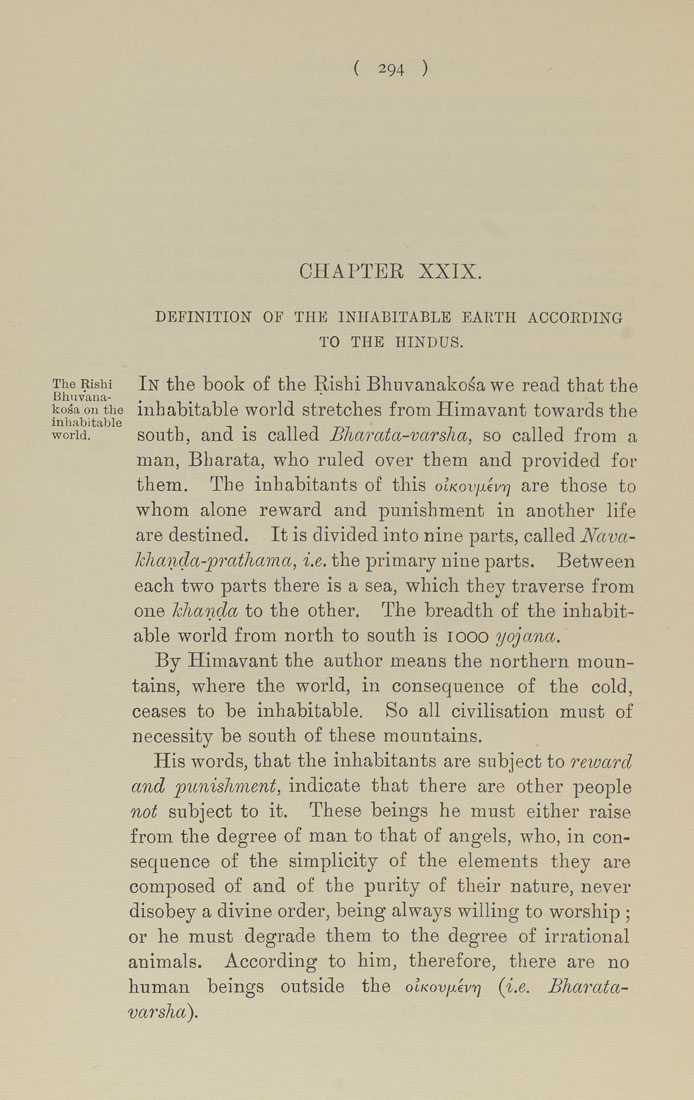Bīrūnī, Muḥammad ibn Aḥmad, Alberuni's India (v. 1)
(London : Kegan Paul, Trench, Trübner & Co., 1910.)
|
||
|
|
|
|
| Page 294 |

( 294 ) CHAPTER XXIX. DEFINITION OF THE INHABITABLE EARTH ACCOEDING TO THE HINDUS. The Rishi Bhuv'ana- kosa on the inhabitable world. In the book of the Rishi Bhuvanakosa we read that the inhabitable world stretches from Himavant towards the south, and is called Bharata-varsha, so called from a man, Bharata, who ruled over them and provided for them. The inhabitants of this olKovp-ev-q are those to whom alone reward and punishment in another life are destined. It is divided into nine parts, called Nava- khanda-prathama, i.e. the primary nine parts. Between each two parts there is a sea, which they traverse from one khanda to the other. The breadth of the inhabit¬ able world from north to south is loOO yojana. By Himavant the author means the northern moun¬ tains, where the world, in consequence of the cold, ceases to be inhabitable. So all civilisation must of necessity be south of these mountains. His words, that the inhabitants are subject to reward and punishment, indicate that there are other people not subject to it. These beings he must either raise from the degree of man to that of angels, who, in con¬ sequence of the simplicity of the elements they are composed of and of the purity of their nature, never disobey a divine order, being always willing to worship ; or he must degrade them to the degree of irrational animals. According to him, therefore, there are no human beings outside the ohiovjihrj (i.e. Bharata¬ varsha). |
| Page 294 |







